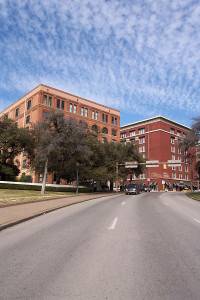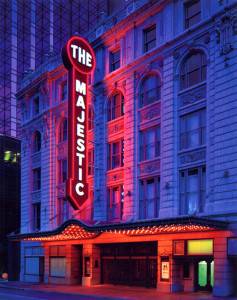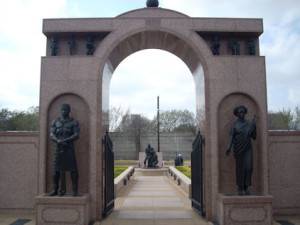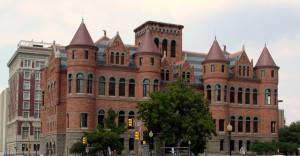History Lessons: The Haute 5 Historical Landmarks in Dallas
Texas is steeped in history. After struggling for freedom from Mexico, we were independent for an entire decade before we settled in as one of the states, so we know a thing or two about our history–making it and maintaining it. Preserving out culture, from the disenfranchised Native Americans to stoic pioneers to fallen presidents, is a top priority here in Dallas, which is why there is such an extensive list of historical landmarks that remain visible and revered around our city. Though it’s difficult to choose only a handful, here’s some of the most notorious and venerable histocratic locales in Dallas.
JFK Memorial Plaza
Possibly the most recognized landmark in Dallas is notable in its infamy. On that fateful day in 1963, John F. Kennedy’s motorcade passed through this area on Main Street right before Oswald shot him through the window of what was then the Texas School Book Depository. Now the sixth and seventh floors of that early 20th century warehouse serve as a museum dedicated to the life and death of JFK, with original photographs, documentary films and artifacts from the period. Outside, visitors can stroll over to the notorious grassy knoll, or see the JFK monument built in remembrance of the slain president, all while listening to a tour from their own cell phones.
The JFK Memorial Plaza is located at 646 Main Street in Dallas, 214-747-6660
Majestic Theatre
After a fire burned down the original Majestic Theatre in 1916, the building was reconstructed in the Renaissance Revival style in 1920 on Dallas’s Theater Row. Home to Vaudeville shows and performances from the likes of Mae West, Houdini and Bob Hope, the theatre auditorium still sees visitors and performers alike, the premiere location for onstage entertainment in Dallas. Although renovated in the 1970s, the interior of the theatre is a sweeping representation of baroque decor still reflecting the fashion of the roaring ‘20s, with plush red seats, 23K gold detailing and a sky blue ceiling with twinkling stars. The lobby’s grand staircase, terrace and chandelier greet guests with the promise of a truly historical experience.
The Majestic Theatre is located at 1925 Elm Street in Dallas, 214-880-0137
Old City Park
If the hustle and bustle of the 21st century has you close to throwing your iPhone out the window of your BMW, head over to the Old City Park, where the Dallas Heritage Village will take you through time to the late 19th century. In efforts to preserve the history of Dallas and its surrounding areas, this 13-acre stretch of land is home to a collection of 38 historic buildings, a giant, town-like museum dedicated to the period between 1840 and 1910. From March through June, visitors can see historical reenactments of a simpler time, while characters dressed in period clothing act as milkmaids working on a Civil War era farm, or school teachers instructing students in a wooden school house. The Millermore Mansion and Sullivan House are still furnished in the fashion of the time, including wingback chairs and crystal chandeliers.
The Old City Park is located at 1717 Gano Street in Dallas, 214-421-5141
Freedman’s Memorial
Freedman’s Town in North Dallas was the center of life for freed African American slaves in the years following the Civil War. In the mid 1800s they built a cemetery near the town, and after it was paved over by urban expansion, the graves were rediscovered in the 1980s and a memorial was designated to be built in remembrance of two centuries of anguish by Southern slaves. The park consists of a sculpture garden featuring bronze, larger-than-life statues and smaller totem pieces created by David Newton to reflect the journey African Americans endured, from the proud life they had in their native homeland to the destruction and destitution they faced during and after slavery. The memorial was noted as the first of its kind in the nation.
The Freedman Memorial is located at Lemmon Avenue and N. Central Expressway in Dallas, 214-670-3284
Old Red Courthouse
Now a museum dedicated to educating the public on the economic, social and political histories of Dallas, the Old Red Courthouse is an institution easily identifiable among the buildings of downtown Dallas. Built in the Romanesque style in 1892, the courthouse originally featured six courtrooms and a clock tower, a 90-foot structure recently restored. The turrets and gargoyles are reminiscent of the period, and the interior, including the grand staircase and stained glass windows, are composed of actual pieces from the 1892 building. Now visitors can enjoy artifacts like a flapper-style wedding dress from 1925 Neiman Marcus and Clyde Barrow’s gun in the museum’s exhibits.
The Old Red Courthouse is located at 100 S. Houston Street in Dallas, 214-745-1100
//
//
//
//
//

















